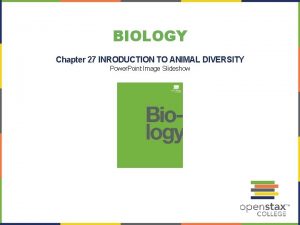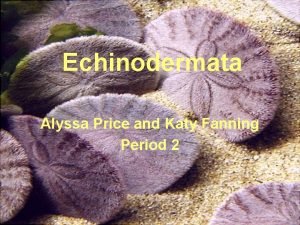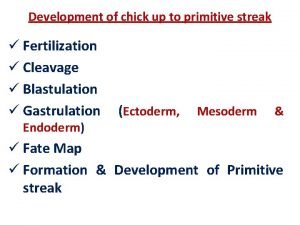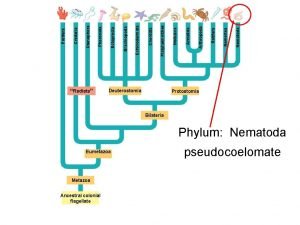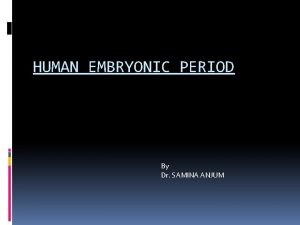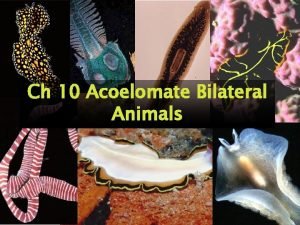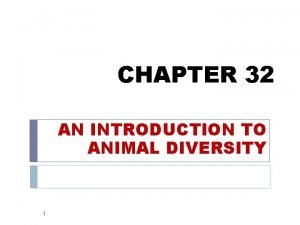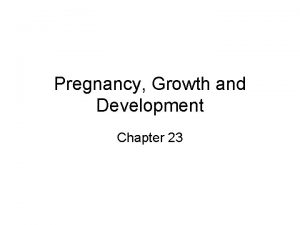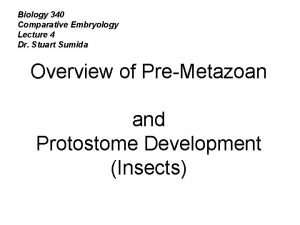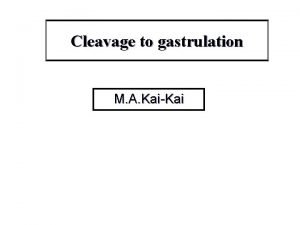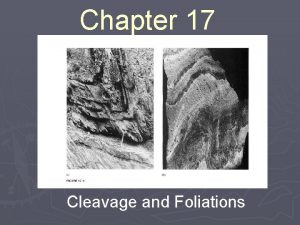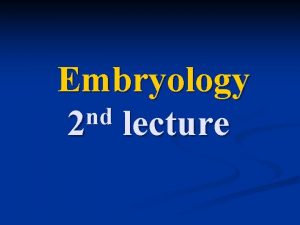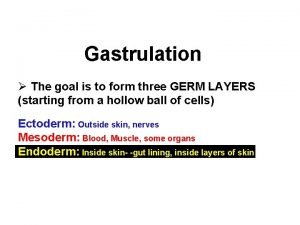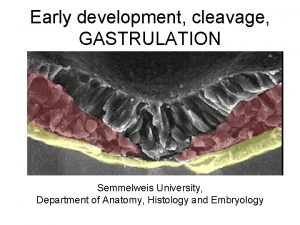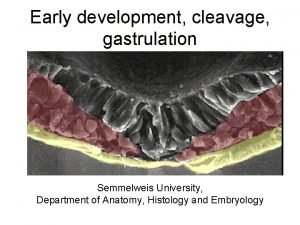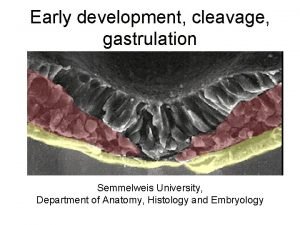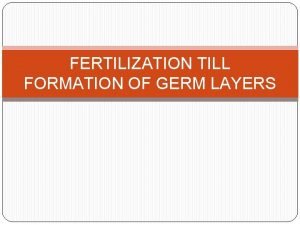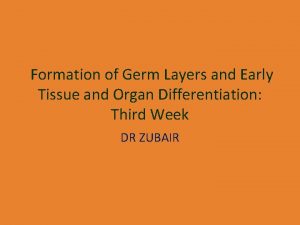Cleavage Gastrulation formation of the germ layers Cleavage












- Slides: 12

Cleavage, Gastrulation & formation of the germ layers.

Cleavage • Fertilization is followed by cleavage, a period of rapid cell division without growth • Cleavage partitions the cytoplasm of one large cell into many smaller cells called blastomeres

• The eggs and zygotes of many animals, except mammals, have a definite polarity • The polarity is defined by distribution of yolk, with the vegetal pole having the most yolk

LE 47 -9 Zygote 0. 25 mm 2 -cell stage forming 4 -cell stage forming Eight-cell stage (viewed from the animal pole) 8 -cell stage 0. 25 mm Animal pole Blastula (cross section) Blastocoel Vegetal pole Blastula (at least 128 cells)

Gastrulation • Gastrulation rearranges the cells of a blastula into a three-layered embryo, called a gastrula, which has a primitive gut

Gastrulation • The three layers produced by gastrulation are called embryonic germ layers – The ectoderm forms the outer layer – The endoderm lines the digestive tract – The mesoderm partly fills the space between the endoderm and ectoderm

LE 47 -12 CROSS SECTION SURFACE VIEW Animal pole Blastocoel Vegetal pole Dorsal lip of blastopore Dorsal tip of blastopore Blastula Blastocoel shrinking Archenteron Ectoderm Mesoderm Endoderm Blastocoel remnant Key Future ectoderm Future mesoderm Future endoderm Yolk plug Gastrula

• During gastrulation, some epiblast cells move toward the blastoderm’s midline and then detach and move inward toward the yolk

LE 47 -13 Epiblast Primitive streak Future ectoderm Migrating cells (mesoderm) Endoderm Hypoblast YOLK

Organogenesis • During organogenesis, various regions of the germ layers develop into rudimentary organs

• Many structures are derived from the three embryonic germ layers during organogenesis

Summary • At completion of cleavage, the blastocyst forms • The trophoblast, the outer epithelium of the blastocyst, initiates implantation in the uterus, and the blastocyst forms a flat disk of cells • As implantation is completed, gastrulation begins • The extraembryonic membranes begin to form • By the end of gastrulation, the embryonic germ layers have formed
